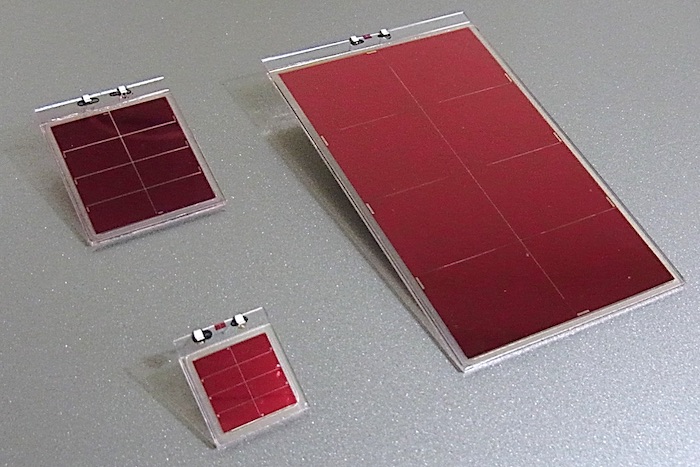- Home
- Sustainability
- Materiality for the Ricoh Group
- Approach to Materiality (Material issues)
Approach to Materiality (Material issues)Contribution to an IoT society through energy harvesting technology
Zero-Carbon Society
Background and issues
The demand for sensors is rapidly increasing, with approximately one trillion sensors expected to be needed every year to achieve an Internet of Things (IoT) society, where everything is connected to the Internet.
For situations where there are a huge number of things requiring sensing technology, as well as places where it is difficult to secure power sources by normal methods, it is imperative that there are devices able to obtain power from the environment.
This means that either energy harvesting, by which power is generated from light, heat and vibration in the ambient environment, or a standalone power source that does not require recharging is necessary.
Serving the social good through business
 Developed solid-state dye-sensitive solar cell
modules
Developed solid-state dye-sensitive solar cell
modules
 A desk mounted with the DSSC module
supplied by Ricoh
A desk mounted with the DSSC module
supplied by Ricoh
Solar batteries are regarded as promising as they can generate power wherever sunlight is available. A dye-sensitized solar cell (DSSC) that exhibits favorable power-generating performance even under weak indoor light has drawn attention as a next-gen solar cell.
We successfully created a solid electrolyte material for the solidstate DSSC by applying the organic photoconductor technology Ricoh has acquired through the development of multifunction printers. The solid-state DSSC has solved safety and durability issues associated with batteries with liquid electrolytes, such as leakage and corrosion. At the same time, the power generation performance has significantly improved thanks to the design of organic dye that suits the wavelengths of indoor light sources and the optimized device structure.
Ricoh strives to contribute to power supply in an IoT society through further enhancing the performance of the solid-state DSSC as a stand-alone power source for sensing devices, light-emitting devices and switches.